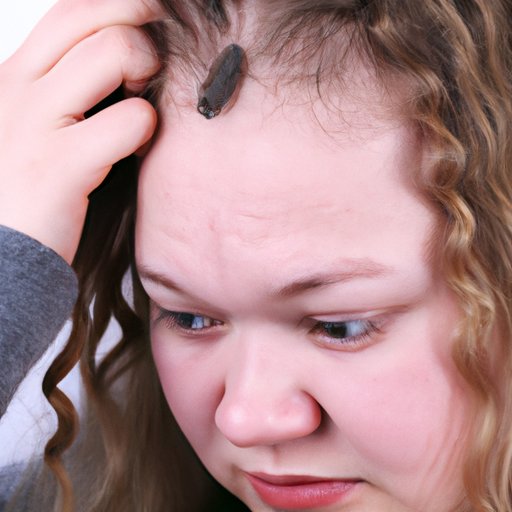
Introduction
Lice, a small parasite that feeds on human blood, can cause discomfort, irritation, and embarrassment. Infestation is common among school-going children, but anyone can get lice. They spread through close contact with an infected person and are highly contagious. In this article, we’ll explore how to know if you have lice by examining the symptoms, inspection tips, debunking common myths, sharing prevention tips, and discussing treatment options.
Symptoms to Lookout for
The most common symptom of lice infestation is itching, especially behind the ears and on the scalp. The itching is caused by an allergic reaction to the saliva of the lice after they bite. Scratching the scalp can lead to secondary infections like impetigo. Another symptom is the presence of small sores on the scalp caused by scratching. Lice eggs, also known as nits, can be found on hair strands close to the scalp and are usually white or beige. Nits are difficult to remove and are attached to the hair strand.
Inspection Tips
It’s important to inspect your scalp thoroughly for lice to identify them early. It’s recommended to use a nit comb specially designed to remove nits. The teeth of the comb are close together, making it easy to trap nits and lice. To inspect, start by wetting the hair and combing it from the roots to the tips. Check behind the ears, nape of the neck, and crown of the head. Lice can move quickly, so it’s crucial to comb thoroughly. You can also look for small bites or rashes on the scalp. Nits take a week to hatch, so if you see them close to the scalp, it’s an indication of ongoing infestation.
Debunk Common Myths
Many people mistake dandruff for lice. Dandruff and lice are two very different things. Dandruff is a common skin condition that causes flaking of the scalp. Dandruff flakes are generally light and can fall easily from the scalp. On the contrary, lice eggs are firmly attached to the hair shaft and are difficult to remove. They are usually small and white, and closer to the scalp. You can also differentiate dandruff from lice by the shape, color, and size of the flakes on the scalp.
Prevention Tips
The best way to prevent lice infestation is to avoid sharing personal items like combs, hairbrushes, hats, and headphones. It’s also important to maintain good hygiene by washing hair with shampoo regularly. You can also tie long hair in a braid or ponytail. Make sure to wash bed linens, clothes, and towels that have been in contact with an infected person in hot water. Boil combs and hairbrushes for 10-15 minutes to kill lice and nits.
Treatment
If you suspect that you have lice, there are several natural remedies and over-the-counter treatment options available. Natural remedies include using essential oils like tea tree, eucalyptus, and lavender. Apply a few drops of the oil to the scalp and leave it for 30 minutes before washing. An over-the-counter treatment option is a lice-killing shampoo that contains pyrethrin or permethrin. It’s important to follow the instructions on the package carefully. To treat the infestation, wash bed linens, clothes, and towels in hot water. Combs and hairbrushes should be soaked in hot water or boiled for 10-15 minutes. Vacuum carpets and upholstery in the home to remove any lice and nits. If the infestation persists, consult a medical professional for severe cases.
Conclusion
Lice infestation can be problematic, but it’s vital to know how to identify it early, debunk common myths, and prevent it from happening. Early detection is essential to avoid spreading to others, and treatment options are available. Good hygiene practices, such as washing hair regularly and avoiding sharing personal items, can help prevent lice. If you suspect lice infestation, act immediately to gain control and avoid further spreading.




